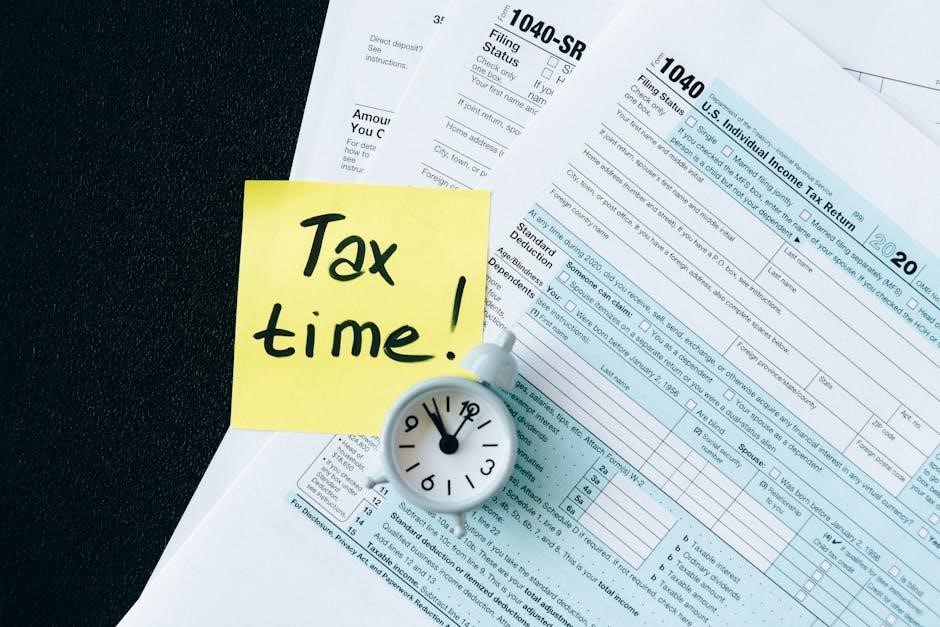Ideal Logic Combi Timer Instructions: A Comprehensive Guide
Welcome! This guide provides comprehensive instructions for understanding and utilizing the timer functions of your Ideal Logic Combi boiler. Whether you have a mechanical or electronic timer, this resource will help you set heating schedules, troubleshoot common issues, and optimize your boiler’s performance. We aim to simplify the process for you!
The Ideal Logic Combi boiler range is a popular choice for homeowners seeking a reliable and efficient heating solution. These boilers are known for their compact design, ease of use, and ability to provide both central heating and instantaneous hot water. Available in various outputs, such as 24kW, 30kW, and 35kW, Ideal Logic Combi boilers cater to different household needs.
Featuring full sequence automatic spark ignition and fan-assisted combustion, these boilers ensure efficient and safe operation. The Logic Combi C range, in particular, is designed for straightforward use. To maximize efficiency, ensure the boiler operates at its maximum rate by opening the hot tap to maximum flow during setup.
Understanding the timer functions is crucial for optimizing your boiler’s performance and saving energy. Ideal provides user manuals and guides to help you navigate the settings and features of your Logic Combi boiler, ensuring comfortable and cost-effective heating.
Understanding Different Timer Types: Mechanical vs. Electronic
Ideal Logic Combi boilers often utilize either mechanical or electronic timers to control heating schedules. Mechanical timers, typically 24-hour models, offer a simple, manual way to set on and off periods using pins or dials. These are generally more basic and easier to understand at a glance, suitable for those preferring straightforward operation.
Electronic timers, usually 7-day programmable options, provide greater flexibility and precision. They allow you to set different heating schedules for each day of the week, accommodating varying routines. Electronic timers often include features like summer/winter time adjustments and Opentherm compatibility for enhanced energy saving.
Choosing between the two depends on your needs. If you require simple, consistent scheduling, a mechanical timer may suffice. For more complex or variable heating requirements, an electronic timer offers greater control and customization, potentially leading to improved energy efficiency and comfort.
Initial Setup: Preparing for Timer Installation
Before installing a timer on your Ideal Logic Combi boiler, safety is paramount. Always isolate the boiler from the mains power supply to prevent electrical shock. Consult the boiler’s installation and servicing instructions for specific safety guidelines and warnings.
Next, identify the type of timer you’re installing – either mechanical (24-hour) or electronic (7-day). Gather the necessary tools, including a screwdriver, and refer to the timer’s installation manual. Locate the control box on the boiler where the timer will be housed. If there’s a blanking plate, carefully remove it, often by easing it out with a screwdriver.

Examine the wiring connections. There may be a link wire that needs to be removed and discarded before connecting the timer. Ensure you have the correct electrical plug for the timer and that it is compatible with the boiler’s wiring. Having these steps prepared will ensure a smooth and safe installation process.
Installing a Mechanical Timer (24-Hour)
Begin by isolating the Ideal Logic Combi boiler from the power supply to ensure safety. Open the boiler’s front panel, referring to the installation and servicing instructions if needed. Locate the control box and remove the blanking plate, typically found at the bottom center, using a screwdriver. Discard the blanking plate.
Next, identify and remove the link wire plug from the control box, discarding it as well. Connect the electrical plug of the mechanical timer as shown in the timer’s manual, ensuring a secure connection. Carefully push the mechanical timer assembly into the control box housing until it is firmly in place.

Once the timer is installed, power up the boiler and check that the timer is functioning correctly. Set the desired heating schedule using the timer’s dial or pins. Ensure the timer is properly controlling the boiler’s heating cycles according to your set program. If any issues arise, consult the troubleshooting section of this guide.
Installing an Electronic Timer (7-Day)
First, disconnect the Ideal Logic Combi boiler from its power source for safety during installation. Access the boiler’s control panel, consulting the boiler’s manual for specific instructions if necessary. Remove the existing blanking plate or any previously installed timer, carefully disconnecting any wires attached to it.
Connect the wiring of the electronic timer to the appropriate terminals within the boiler’s control panel. Refer to the wiring diagram provided with the electronic timer for accurate connections. Ensure all connections are secure and properly insulated to prevent electrical hazards. Mount the electronic timer securely in the designated space within the boiler.
Restore power to the boiler and proceed to set the time and day on the electronic timer. Program your desired heating schedules for each day of the week, taking advantage of the timer’s flexibility to create customized heating plans. Test the timer’s functionality to confirm it is correctly controlling the boiler’s heating cycles according to your programmed settings.
Setting the Time and Day on the Timer

After successfully installing your Ideal Logic Combi boiler timer, setting the correct time and day is crucial for accurate heating schedules. Begin by consulting the timer’s user manual, as button configurations and menu navigation may vary between models. Typically, you’ll find dedicated buttons for setting the hour, minute, and day of the week.
Press and hold the designated “set” or “clock” button until the display starts flashing. Use the “+” and “-” buttons to adjust the hour until it matches the current time. Repeat this process for the minutes and the day of the week. Ensure you select the correct AM or PM setting if your timer uses a 12-hour clock.
Once you have set the time and day, press the “set” or “clock” button again to save the settings. Some timers may automatically save after a period of inactivity. Verify that the display shows the correct time and day. If necessary, consult the user manual for instructions on adjusting for daylight saving time (GMT/BST), if applicable. Accurate timekeeping is essential for your programmed heating schedules to function effectively.
Programming Heating Schedules
Once the time and day are accurately set on your Ideal Logic Combi boiler timer, you can begin programming your desired heating schedules. This allows you to customize when your heating system turns on and off, optimizing energy consumption and comfort. Consult your timer’s user manual for specific instructions, as the programming interface may vary depending on the model.
Typically, you’ll access the programming mode by pressing a “program” or “schedule” button. The timer will likely display options for setting different time periods for each day of the week. Common settings include “on” and “off” times for mornings, afternoons, and evenings; Use the “+” and “-” buttons to adjust the desired start and end times for each heating period;
Many electronic timers offer the flexibility to set different schedules for weekdays and weekends. You can also create unique programs for individual days. As you create your heating schedule, consider your daily routine and heating needs. Save your settings once you are satisfied. Regularly review and adjust your heating schedule as your needs change to maintain optimal efficiency and comfort.
Troubleshooting Common Timer Issues
Even with careful setup, timer issues can occasionally arise. A common problem is the timer displaying the wrong time, often due to power outages. Check if the time is correctly set and reset if necessary. If the heating isn’t turning on or off as scheduled, ensure the programmed times are accurate and the timer is in the correct mode (e;g., “auto”).
Another frequent issue is the timer not responding to button presses. Try replacing the batteries in electronic timers. For mechanical timers, ensure the pins or tappets are correctly positioned. If the boiler isn’t firing up at all, verify that the timer is actually calling for heat. The Ideal Logic Combi boiler may have a fault beyond the timer’s function.
If problems persist, consult the Ideal Logic Combi user manual for specific troubleshooting steps. Refer to the manual’s literature section on the website in PDF format. Resetting the timer or boiler could resolve some issues. If none of these steps work, consider contacting a qualified heating engineer for assistance. They can diagnose and repair any underlying problems with the boiler or timer system.
Resetting the Boiler and Timer
Resetting your Ideal Logic Combi boiler and timer can often resolve minor operational issues and restore normal functionality. Before initiating a reset, it’s helpful to understand what this process entails. A reset essentially restarts the system, clearing any temporary errors or glitches that might be affecting performance. Locate the reset button on the boiler’s control panel. It’s usually marked with a symbol or labeled explicitly.
To reset the boiler, turn the mode control knob to the reset position and immediately turn it back to the required setting. This action should restart the boiler’s internal systems. For the timer, the reset process varies depending on whether you have a mechanical or electronic model. Mechanical timers often have a small reset button that can be pressed with a pen or similar object. Electronic timers usually have a reset option within their menu settings.

After resetting both the boiler and timer, monitor their performance to ensure the issues have been resolved. If problems persist, consult the user manual for further troubleshooting steps or contact a qualified technician for assistance. Remember to always prioritize safety when working with gas appliances.
Advanced Timer Functions and Settings
Beyond basic programming, Ideal Logic Combi timers often include advanced functions to optimize heating efficiency and comfort. Explore features like holiday mode, which allows you to set a period when the heating is off or at a minimum level, saving energy while you’re away. Some models also offer optimum start and stop functions, learning your home’s heating characteristics to preheat the space efficiently.
Many electronic timers provide precise temperature control, enabling you to set different temperatures for various times of the day. This ensures comfort while minimizing energy waste. Some advanced timers are compatible with smart home systems, allowing remote control via smartphone apps. This provides flexibility and convenience, enabling you to adjust settings from anywhere.
To access these features, consult your timer’s user manual for detailed instructions. Understanding and utilizing these advanced settings can significantly improve your heating system’s performance, reduce energy consumption, and enhance your overall comfort. Regularly review and adjust these settings to align with your lifestyle and seasonal changes for optimal results.
Finding the Ideal Logic Combi User Manual
Locating the user manual for your Ideal Logic Combi boiler is crucial for understanding its specific features and settings, particularly those related to the timer. The manual contains detailed instructions on programming, troubleshooting, and advanced functions unique to your model. If you’ve misplaced the physical copy, several online resources can help you find a digital version.
Start by visiting the Ideal Heating website, where you can often find a digital library of manuals for their products. Use the search function, entering your boiler’s model number to locate the correct manual. Alternatively, try searching online using the boiler model number and the term “user manual” or “PDF.”
Many third-party websites also host user manuals for various appliances. Be cautious when downloading from these sites, ensuring they are reputable to avoid malware. Once you find the manual, save it to your computer or device for easy access. Keep it readily available for future reference, especially when adjusting timer settings or troubleshooting issues.

